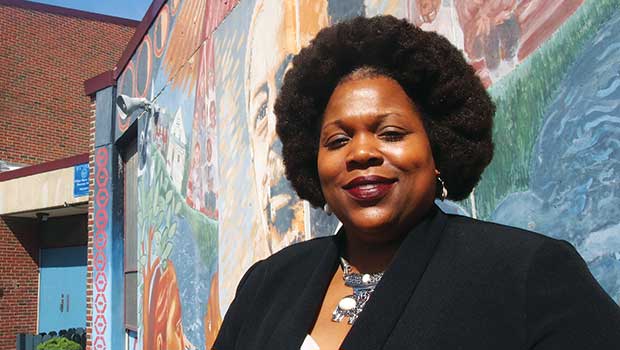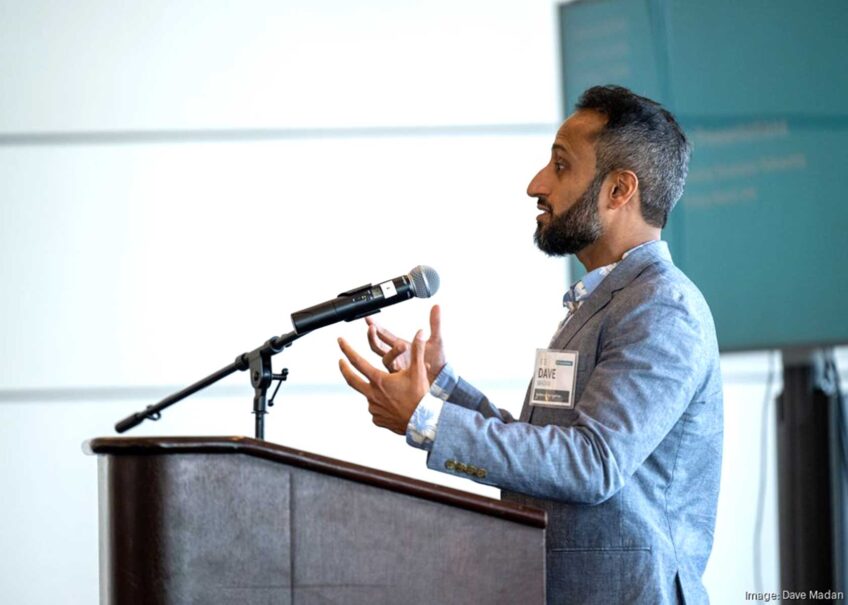Trotter’s new principal readies for school
Thomas: “This is where I belong”

Sarita Thomas, the William Monroe Trotter K-8 School’s new principal, sat down with the Banner last week, with the first day of school just around the corner. Thomas is a Boston native and Boston Public School veteran who’s racked up more than 20 years of teaching and administrative experience. This is her first principal position and, she said, she is exactly where she wants to be.
“When I left that Trotter interview, I felt like, ‘This is where I belong,’” Thomas recalled. “I felt it in my soul.”
Thomas began her BPS career teaching math at Dorchester’s Frank V. Thompson Middle School, went on to serve as dean of discipline at the Irving Middle School and later as an administrator at the Mattahunt.
It was a long road to becoming a principal, and at times a struggle to keep believing that her goal would be reached. Ultimately, she said, the path she forged let her accrue a breadth of skills she now calls upon as she and her staff ready for the new year.
Gearing up
During the end of last school year, Thomas visited the Trotter to introduce herself to teachers, both as a group and individually, and to obtain their thoughts on the school, including what practices they valued and wanted to keep, and where they saw room to improve. As this school year approaches, she and other faculty members have gathered to collaborate and prep.
Among the goals they have selected is finding ways to encourage children to rely less on teachers and be more independent when it comes to trouble-shooting, problem-solving and critical thinking. Thomas said she also wants to be sure to serve students at all skill levels and avoid focusing so tightly around students who are struggling that those ready for advanced work go underserved.
Identifying success
Thomas’s background in the classroom helps her understand teaching challenges and pressures, including the fact that teachers often fear that a new principal will come in and overturn everything.
That’s not her goal at the Trotter. The school’s performance has risen and fallen over the years, dropping to a Level 4, rising to a Level 1 and then slipping again.
“We’re primed and ready to get back to a Level 1 school,” Thomas said.
She says she recognizes the Trotter has a supportive, collaborative team of committed teachers, including some of the same teachers who worked to pull it out of turnaround. Now she says her job is not to upend the dynamic but to help identify what worked so as to improve the Trotter’s performance and reinforce those successful practices.
“They clearly had a recipe that worked. And we need to figure out what that recipe is,” Thomas said. “As teachers, you’re not jotting down what you did as you do in computer programming. You just work. We need to start jotting down what we did and what was successful and not successful so we have a blueprint of what to do.”
Through a principal’s eyes
While her teaching experience informs her work and helps her understand her educators’ needs, being a principal carries with it a distinct change in perspective. In particular, Thomas said, her view has shifted on money.
As a teacher, she fought hard to get her children services, no matter what the cost per student served. Now, as a principal, she has to look at the financial balance, make careful choices about what the school can afford and figure out how to get the most for their dollars.
The journey
For seven years, Thomas tried to find her way into a principalship. She says some doors remained closed to her — such as development programs or fellowships she pursued that went to other candidates. But the opportunities that did materialize for her shape her vision.
High among them was working at the Irving, where she witnessed how a dual-principal partnership worked. With a principal’s responsibilities divided between two people — one handling relationship-building, climate and classroom culture, and other socioemotional elements, and the other responsible for instructional aspects, including teacher evaluations — Thomas could see these two dimensions teased apart and the interplay between them.
“That is what catapulted me and grew me,” she said.
She then was able to sharpen her skills working in an administrative role at the Mattahunt, where she gained deeper insight into how various departments worked together.
Over the years, she met colleagues working in various district departments that she now can turn to, as needed. Earlier in her teaching career, she developed skills both in teaching children in the classroom and providing instruction to adults — two groups with very different learning needs that call for distinct approaches, she said.
That experience comes in handy now. “I’m responsible for meeting the needs of adults who are responsible for meeting the needs of students,” she said, noting how the lessons from her varied background experiences weave together.
Even with school doors yet to open, Thomas’s new role tested her skillset. In the second-to-last week of August — on the cusp of the school year— two teachers left. Thomas said she had to sit back, breathe and be OK with not having an immediate solution — something she learned to do as a teacher. She reached out to human resources to help arrange a smoother transition along with candidate outreach, then she turned to social media to recruit and worked with an administrator to call on promising applicants from earlier interview cycles. The team came together and — crisis averted.
“We found out last Friday, and here it is Thursday and we have two candidates lined up and ready to go,” Thomas said.






